All about diamond drilling

It will be useful to know everything about the features of diamond drilling for those who have decided to master this technique or at least thoroughly understand what it is.

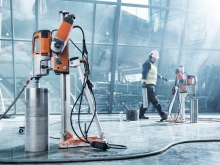

What it is?
Diamond drilling - one of the modern technologies in which scientific achievements are applied, which made fundamentally possible processes inexpensive and real. When a Swiss watchmaker suggested using the jewelers' favorite stone for the production of drilling tools and made the first of them, all the advantages of the method became clear. An obstacle to its widespread use was only the high cost of the used natural raw materials with 10 points out of 10 on the hardness scale.
The production of artificial diamonds, established thanks to the brilliant discovery of Ovsey Leipunsky, who later took part in the creation of nuclear weapons, did not arouse much interest among jewelers. But on the other hand, the preservation of strength characteristics made it possible to manufacture tools for a variety of needs in the scientific and industrial spheres. Diamond drilling was widely used in construction after the creation of new materials for the construction of buildings - monolithic, reinforced concrete. It would be difficult (and sometimes simply impossible) to make holes in it with the usual tools.
Now this is often the only method of laying communications that allows you to reduce the time spent on work, to minimize financial losses that are inevitable during protracted processes that are difficult for builders.

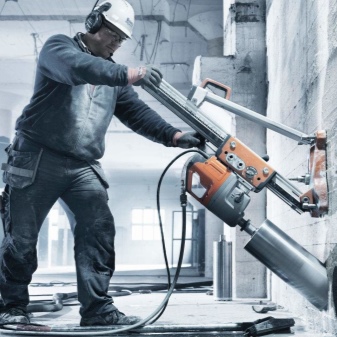
The use of a unique technology in the restoration, construction of houses, roads, geodetic studies is explained by its undeniable advantages:
- the ability to quickly make precise holes of any diameter with a perfectly flat surface inside;
- flat range - there are different settings that allow you to work in almost any plane, without restrictions;
- exclusion of defects in the surface, due to the absence of shocks and vibrations typical for other drilling methods;
- the relative noiselessness of the work carried out, even when cutting out reinforcement, while also without the appearance of hidden cracks, distortions, weakening of adjacent structures;
- maintaining the strength of the treated inner surface;
- long-term guarantee of the use of the tool - the erasure of the diamond edge leads to the emergence of a new cutting layer of the multilayer matrix, and the quality of the work performed is flawless for a long time.
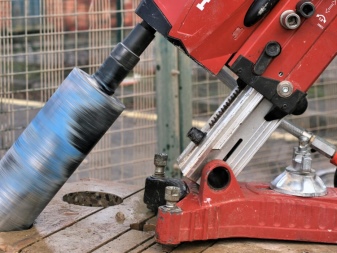
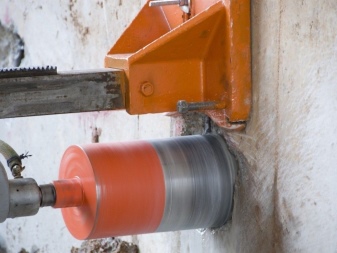
There are no perfect tools, so some builders also call negative points - for example, the ability to quickly render an expensive tool unusable without following the prescribed technologies and even simply not having professional skills. With any method, there is waste - dry and wet... However, there are undoubtedly more advantages, therefore even the cost of repair in case of breakdown and the need for a professional approach to work do not make diamond drilling less in demand.
More than a thousand types of instruments for this process are produced in the Russian Federation.

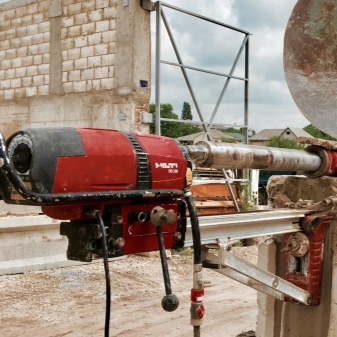
Appointment
Any drilling is a process of creating holes, and diamond drilling is no exception. This is also a technological process, only during construction, restoration or taking samples for examination in concrete or rock, a diamond matrix is used.
In the construction process, diamond drilling can be used for each of the many needs, where it is required to make a passage, make a niche or a through opening in reinforced concrete:
- when laying numerous communications - for ventilation, sewerage, heating, cable;
- if necessary, carry all these indisputable benefits of civilization through the foundation;
- when arranging any type of air duct for an air conditioner or gas pipeline;
- when arranging door and window openings in the wall, when monolithic construction technology is used, for skylight windows in basements;
- when installing stair railings, for socket outlets, natural ventilation;
- when laying an alarm or an automatic fire extinguishing system through the floors;
- when assembling production facilities from reinforced concrete structures and installing technological equipment.
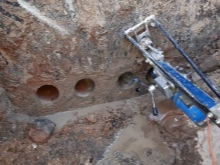

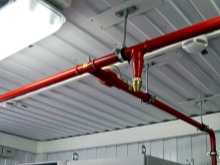
A simple concrete wall is not particularly difficult for the builder; it can be easily disposed of with a puncher, as well as with a brick one. But it is more difficult to cope with reinforced concrete, since in addition to concrete there is also iron reinforcement in it. Theoretically, you can use a special drill for metal.
However, a diamond bit will easily overcome both materials, and a brick wall will pass many times faster, it will cope with both soft shell rock and hard natural stone.
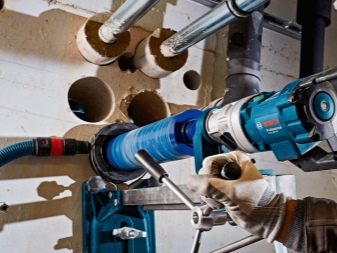
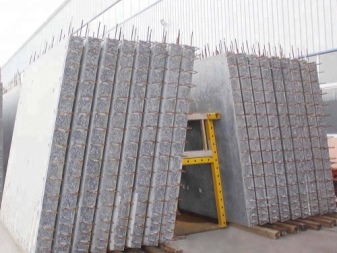
Crowns and drills with crumb powder, corundum powder are designed to perform the following work:
- drill monolithic structures, where the wall occupies the entire depth, part of the thickness for the installation of the viewing window;
- pass through the base, slab, floor, construction lintel, where the material is concrete;
- wedge into the brick layer of the wall to form a tongue and groove, a niche for the installation of junction boxes;
- go through the masonry, the main wall, create recesses where the material is a brick;
- fasteners for equipment, passage of technological pipes, passage with a crown to a depth of 50-70 mm for socket outlets of electrical outlets, switches;
- openings in reinforced concrete slabs;
- create a shaft for the passage of condensate discharge process pipes, fan drive and control cables under the air conditioner;
- to drill a ceiling to make a technological window for the passage of bundles of cable products, ventilation ducts.
No dust, no need for further processing of the hole, zero probability of cracks, thermal damage to materials located in the immediate vicinity, reduction of concrete strength, fire and noise safety during work - these are just some of the bonuses received.
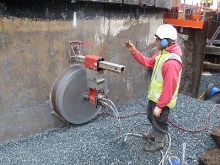
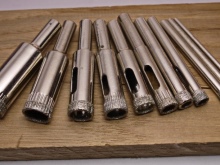
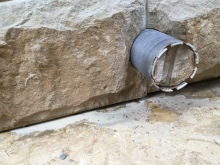
Cutting types
Tools with diamond discs are used in two types of cutting - dry and wet. In theory, both methods can be used, and this is what happens: where there is no drainage, you can get hit by an electric current, use anhydrous, and in other cases - water dust suppression. Those who consider liquid mud from wet cutting to be a disadvantage can also turn to waterless technology, but it has specific features.
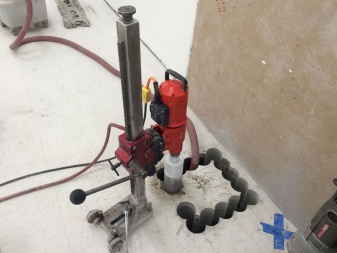
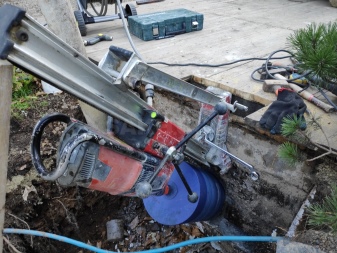
Dry
Despite the prevailing idea of its low demand, it is quite common and is invariably on the list of offered professional services.
The peculiarity lies in the production of holes with operating equipment:
- at food enterprises;
- in textile factories;
- in printing houses;
- in leather technology;
- in laboratories, instrumentation, where small particles of concrete, crumbs, dust harm industrial lines, finished products, food.

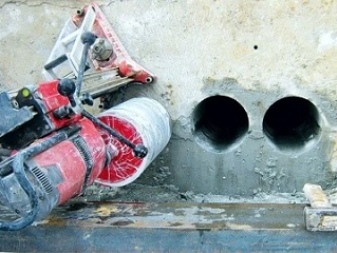
On open-type construction sites, stone for curbs is processed in this way, small niches are made, bricks are cut - this requires a conventional angle grinder and a diamond disc, the diameter of which is selected according to the prevailing need.
However, in a small room, it is possible, even by simple calculations, to understand that within a short time after the start of the process there will be a real dust storm, loss of visibility and the ability to breathe air. If we consider the advantage of working without water the absence of liquid mud, into which the particles of the crushed material are transformed when drilling with the wet method, then it is fully realized only where there is already a finish or a source of electric current is located in the immediate vicinity. In the rest, you will have to protect the respiratory system and work almost blindly.
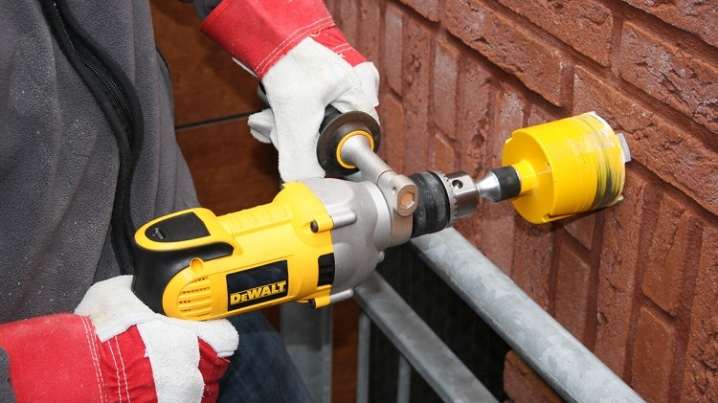
Wet
A promising and main direction with the absence of special noise and dust, which is achieved by supplying water to the workplace of the driller or cutter. For those who are not afraid of the release of sludge that appears when mixing water with dust particles, there are additional advantages - the safety of an expensive tool, a more rare preventive examination.
The dry method is used where there is no constant source of water, and in other cases, craftsmen prefer the wet method, as it is more convenient and has a much wider range of possibilities. But it is impossible to make strong recommendations to resort to only one method or the other because of the different situations that arise, the scale or the conditions in which the work is carried out. Some experts are confident in the importance of taking into account the surface structure, but there are also indications that the second method has no restrictions, while without water, holes with a diameter of no more than 200 mm can be made.
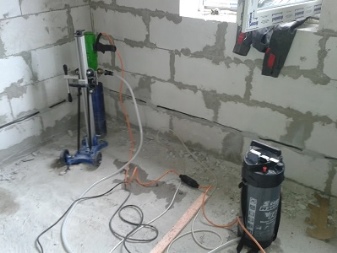
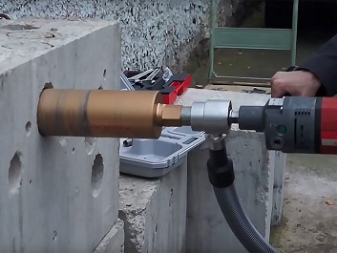
Equipment
Despite the presence of more than a thousand options for diamond drilling attachments produced only by the domestic industry, upon closer examination it turns out that a classic-type tool invariably consists of crowns, tripod and motor... This external simplicity of the device, upon closer examination, leads to a difficult dilemma when buying expensive equipment.
Tripod or bed - the system on which the mode of use, weight and relative ease of movement depend. This can be a manual drilling rig or a complex system. Manual is used for small holes that could be handled as a last resort perforator (if not for the danger of cracking). Stanina in a special machine allows you to move the drill along the axis of rotation and make large wall openings. There are even self-propelled vehicles with wheels, but instead of them you can use special units, which are simply put on excavators during work.
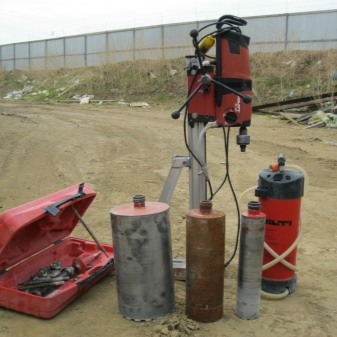
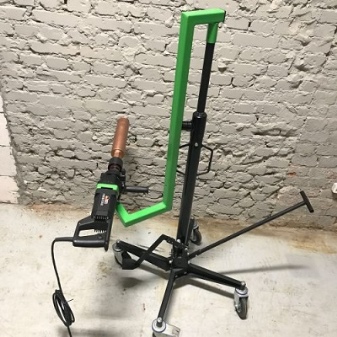
There are different types of drive - from electric, the most common, to hydraulic and pneumatic, and sometimes even gasoline. The type of fastening can be with the help of an anchor, a vacuum pump or on a special spacer bar, and for road works - on a specially provided site. Stands for support can be straight or with a device for creating a certain angle of inclination, which can be adjusted if necessary.
The division by power and diameter does not mean that you have to buy a model that only performs similar types of processes. There is middle class, however, fixed on the surface, which is used for laying communications in a building, and for installing plumbing, and for making holes of small diameter. A diamond bit can be attached not only to the end of the device, but also to the side, be of different diameters, the body can be solid or with holes. The unit itself is sometimes designed only for a certain diameter, but more often there are installations that work with variable diameters. There are drilling discs or diamond twist drills (for small holes).
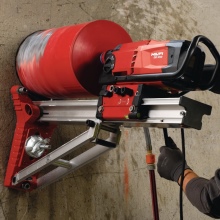

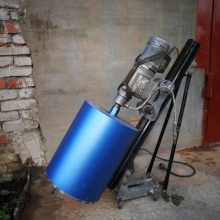
Upgraded models assume electronic control, additional functions (automatic shutdown when idling, displays, control panels and other innovations that extend the guaranteed operating time). Hand drills for diamond drilling can operate in several modes.
With a wide range of applications and a variety of fixtures essential ingredients for success the quality of the equipment, the correct choice of technology and the skill of the performer are invariably. If it is not possible to purchase an installation or there is no work skills, it is better to entrust an important mission to a professional.
Before buying, you need to take into account numerous components and make a choice only after they have been thoroughly weighed.
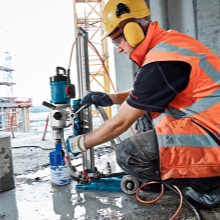
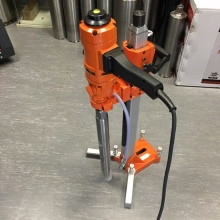
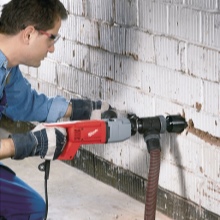
Technology
Numerous recommendations on how to make a hole of the required diameter will prompt the technology to a professionally trained person when it comes to a complex installation, or to someone who constantly works with a conventional drill and has purchased a tool for manual diamond drilling. In order to drill even a hole with a medium diameter, you need to choose a tool with a power reserve - these are models of the middle class with a power of up to 4000 W, designed even for holes of 300 mm. To drill at an angle, they buy stands that give the ability to tilt and adjust, but only powerful professional tools are suitable for large-diameter holes.
They are usually bought by organizations that are engaged in construction, redevelopment and major repairs. If they are necessary for private construction carried out on their own, you can rent such a device. This segment of the construction market does not lack samples of in-demand products, but listen to the opinion of experts - in difficult cases (hard-to-reach places, when laying communications in the foundation or equipment of a gas pipeline), it is better to seek the help of a specialist with professional equipment.

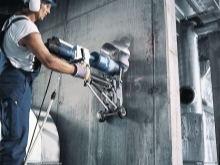
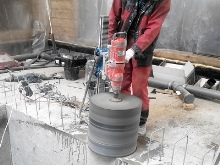













The comment was sent successfully.